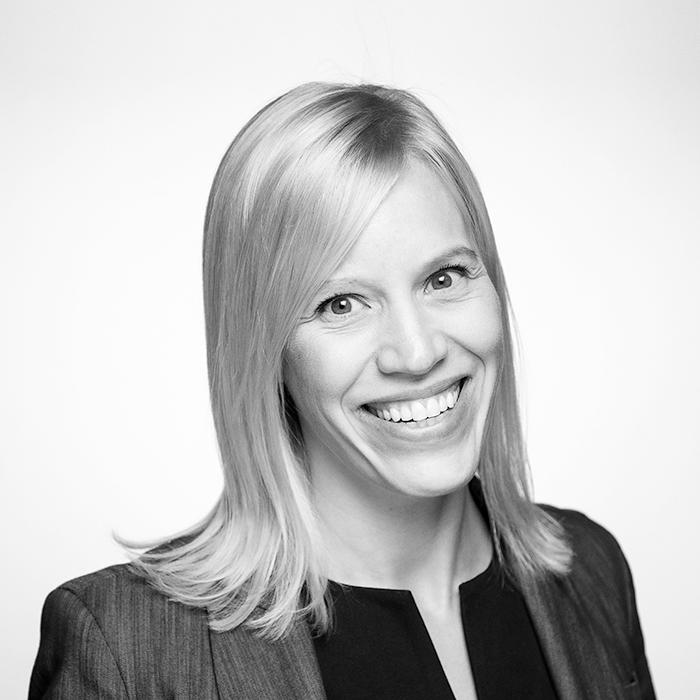
Thought leadership
Top 10 criteria for evaluating OCIO providers
What's missing from your OCIO checklist? Don't skip these in your next review.
Top 10 criteria for evaluating OCIO providers
There’s a lot to consider when you’re responsible for financial decision-making. Finding the best match for your organization can be challenging. It’s critical that your evaluation process addresses what matters most. That means asking the right questions.
Whether you evaluate providers by issuing an RFP or solicit the help of an OCIO search consultant, it’s easy to miss some important criteria. Here are 10 questions you won’t want to skip:
1. How many of your clients are similar to our organization?
When organizations like yours work with a provider that you are considering, it’s comforting; it lets you know that you’re on the right track. An OCIO lacking experience specific to your organization can miss critical details that can impact your financial health. The provider should have a client base and experience serving clients like you. Their client and advice professionals should have a deep understanding of your operating model, goals and objectives, regulatory changes and things like accounting rules, liquidity needs, spending and funding requirements.
But the devil is in the details when reviewing this information. When examining their client base, it’s crucial to ask for OCIO/discretionary relationships only. Also, take a look at the OCIO’s client demographics by size and length of relationship. This can give you a clearer picture of how your relationship will be valued by the provider and how you will fit into the provider’s organizational structure/service model. It may also dictate the experience level of the team assigned to you.
2. Have you invested in comprehensive risk management/modeling?
As we learned in the great financial crisis and through the recent pandemic, having proper risk controls across several layers is paramount. Risk can manifest itself in many ways — at the organizational, portfolio, investment manager and security levels. It is important that the provider has monitoring mechanisms at all levels. Also, a provider that uses robust modeling and risk management systems can provide invaluable insight and decision-making support.
A few questions worth asking: What systems are used to quantify risk across multiple exposures and in various market regimes? Does the provider have separate operational due diligence and investment due diligence when evaluating new managers, both in the public and private markets? Does the provider have a separate risk team with veto power over investments if any red flags are found in the due diligence process? All these indicate how robust their risk management function is.
3. What is your client service philosophy?
Client service takes on a new meaning when hiring a discretionary partner. Exceptional client service must be the standard. Your partner should be an expert in serving clients like you, have a deep understanding of your goals and objectives and be focused on educating the committee to ensure the best decisions. That includes introducing new ideas and asset classes and providing education and modeling to support the committee.
Your team should have a low ratio of clients so that they can be responsive and adequately focus on your needs. You may require custom reporting or ad hoc analysis; a good OCIO can help with that on a timely basis.
In some OCIO models, the client team is responsible for manager research and due diligence. Make sure it’s clear how time is spent between client service and day-to-day investment management. Also, the team proposed in the RFP and finals should match, with no “bait and switch” of who will service your organization’s account. The team identified should be the same team responsible for the day-to-day management of the relationship.
4. How do you customize your investment approach based on the organization?
Every organization is unique. That’s why a one-size-fits-all approach is not prudent for most organizations given custom liquidity needs, spending expectations and funded status to name a few. Your investment strategy should match the needs of your organization and align with long-term goals.
Having both the experience and flexibility to adjust investment approaches to various situations is the marking of a well-tenured OCIO. That means the ability to offer a full complement of asset classes, including public and private assets, active and passive options, and as appropriate, socially responsible options. In addition, the OCIO must have the infrastructure to offer a variety of fund structures to best meet your needs, from commingled funds to separate accounts, and finally, reporting and analysis for legacy investments.
5. What are your capabilities and experience in private asset classes?
The significant growth in the OCIO industry pales in comparison to the growth in private assets. This growth has been warranted as investors often need the illiquidity premium private assets offer over traditional public markets in order to meet their investment goals/hurdle rates.
How the provider built out their capabilities in this area matters. Is there a dedicated team and what is their relevant experience? The provider should assist with capital calls, document management, reporting requirements, audit assistance and various other operational complexities that come with allocating capital to private assets.
There should be an established allocation policy for new vs. existing clients. Some private equity funds with limited capacity may not be willing to take assets from all of a provider’s clients. Make sure providers operating as both a non-discretionary consultant and OCIO clearly document how they handle allocations of new capital into this limited capacity fund.
6. Describe your approach to ESG at the client portfolio level and as an organization.
Many organizations are looking to align their investment philosophies with their core values. The OCIO should be able to implement a custom portfolio of high quality investments while meeting your unique goals. A well-established OCIO should be able to incorporate negative screening, positive tilting or impact investing into your custom portfolio.
And while most investment providers have greatly expanded their knowledge and capabilities in this area, have they incorporated the same focus within their own organization? A culture of inclusion should be manifesting through all parts of their organization.
7. What services “beyond investing” do you offer?
Attempting to differentiate providers in the market purely on investment capabilities can prove difficult. Another key criteria for an OCIO is the services they can offer outside of investments that can contribute to your success. These services differ greatly from one provider to another, and are often included in the program at no additional fee.
Of course, what each organization needs beyond investing is different. For a corporate pension plan, this might be as simple as customized reporting or asset class education. For nonprofits, this is often much more robust including things like: creating customized donor marketing materials, solving a unique operational challenges, or participating in student-driven initiatives for college or university clients. Does the provider have experience and examples of ancillary services they have provided to support their clients’ unique vital missions?
8. Is the firm focused on OCIO?
This may seem like an obvious question, but consider this: The OCIO market is likely to eclipse $1.7 trillion in assets under management by 2023,* a number many view as conservative. This growth has encouraged providers that didn’t traditionally provide OCIO services to enter the space. Why does that matter? Building an effective OCIO solution and taking investment discretion requires significant infrastructure, resources and expertise in investments, reporting, accounting, technology and risk management. If the firm has recently or quickly launched a solution, they may not have built the infrastructure and resources needed to act in a fiduciary capacity.
9. How long have they been serving as a discretionary provider?
It is critical to understand the providers experience exclusively as a discretionary provider. As mentioned, some consulting firms more recently launched OCIO/discretionary solutions. Many of those firms moved existing consulting clients into their new OCIO model. In terms of experience, only the period in which the consultant has served as the discretionary OCIO for clients is relevant. There is a much larger level of complexity and accountability in acting as a discretionary OCIO provider.
10. Does the organizational structure promote stability?
It goes without saying that you want to partner with a stable firm. It's important that your investment provider is highly reliable and strives to provide consistently high levels of service and performance. Take time to understand the organizational structure to ensure ongoing stability of the firm. Some important questions to ask include:
- If a private partnership, is the founder still involved? How many partners are at the organization? What is the partner advancement track? How does the provider handle transition from one leadership regime to the next? Is the provider owned by a private equity firm? If yes, how do they dictate decision-making?
- If a public company, what are your sources of revenue? How long have you been a public company? What is the capital structure of the organization (i.e. debt, net cash position, etc.)? What is employee ownership in the company?
These questions are meant to establish a clear understanding of the history of the firm and stability moving forward.
Next steps
Deciding whether the OCIO model is right for your organization is a difficult task. We want to make investigating the growing OCIO trend and evaluating providers easier. Contact us for more information.
*"Cerulli: OCIO assets expected to reach $1.7 trillion by 2023," Pensions & Investments. https://www.pionline.com/article/20190321/INTERACTIVE/190329982/cerulli-ocio-assets-expected-to-reach-1-7-trillion-by-2023
SEI Investments Canada Company, a wholly owned subsidiary of SEI Investments Company, is the manager of the SEI Funds in Canada.


